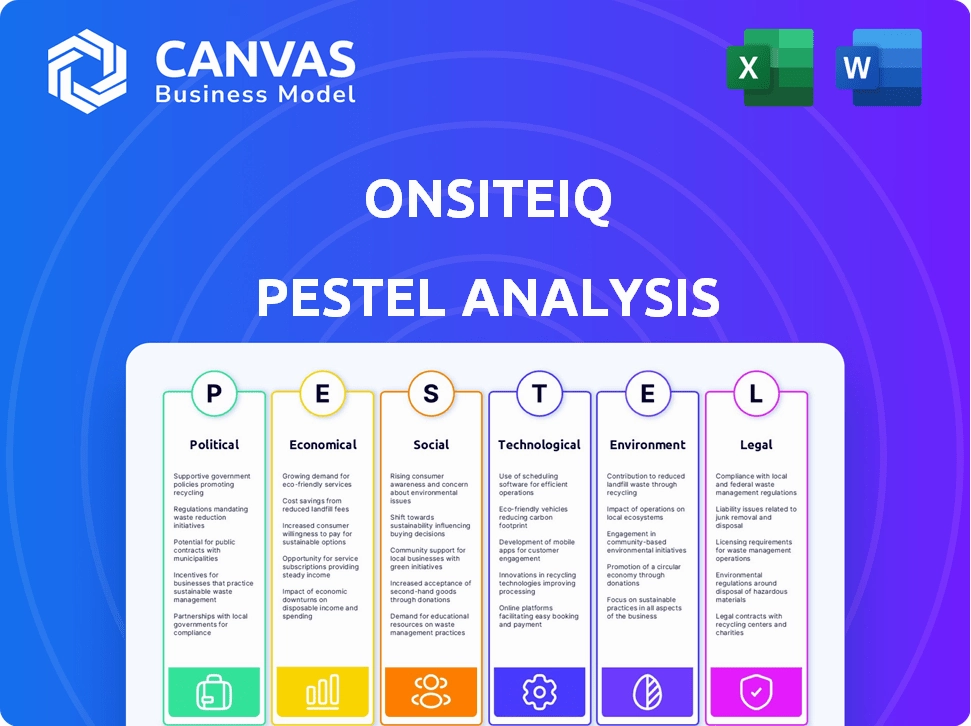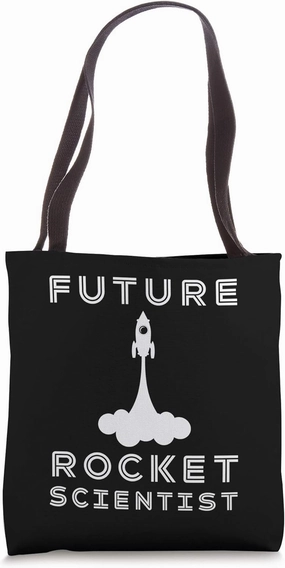The construction landscape is ever-evolving, influenced by a myriad of factors that go beyond the bricks and mortar. In this PESTLE analysis of OnSiteIQ, a pioneering construction intelligence platform for real estate investors, we delve into the interconnected realms of Political, Economic, Sociological, Technological, Legal, and Environmental factors shaping the industry. Each element plays a critical role, from government regulations to sustainability practices, impacting investment strategies and project management. Read on to discover the nuances that define the construction sector today.
PESTLE Analysis: Political factors
Government regulations affecting construction industry
In the United States, construction industry regulations are extensive. The Occupational Safety and Health Administration (OSHA) reported in 2021 that there were approximately 2.8 million workplace injuries in various industries, with construction being one of the most dangerous sectors. In 2022, OSHA introduced new regulations for fall protection, focusing on reducing fatalities, which were recorded at 366 cases in construction in the same year.
Infrastructure investment policies
The Infrastructure Investment and Jobs Act, signed in November 2021, allocated $1.2 trillion funding for infrastructure improvements across the U.S. This involved:
- $550 billion in new spending for public transit, rail, airports, and weatherization projects.
- An estimated $30 billion distributed for highway improvements by 2023.
Zoning laws impacting property development
As of 2023, over 30% of urban areas in the U.S. have zoning laws that restrict residential development. According to the National Multifamily Housing Council, it is estimated that roughly 3.8 million housing units could be built if restrictive zoning policies were revised. Cities like San Francisco and New York exhibit stringent zoning laws, contributing to housing shortages and increased construction costs.
International trade agreements influencing materials costs
The North American Free Trade Agreement (NAFTA) influenced construction material costs significantly until it was replaced by the United States-Mexico-Canada Agreement (USMCA) in 2020. Recent tariffs in 2021 resulted in a 25% tariff on imported steel and a 10% tariff on aluminum, increasing material costs in construction by approximately 30% according to estimates by the National Association of Home Builders.
Labor laws governing workforce rights in construction
The construction industry is affected by multiple labor laws. As of 2023, the Fair Labor Standards Act (FLSA) mandates that the minimum wage for construction workers is $7.25 per hour, with many states opting for higher rates. For example, California mandates a minimum wage of $15.50, leading to increased labor costs. The Bureau of Labor Statistics reported that the average hourly wage for construction laborers in May 2022 was $21.42, depending heavily on local labor laws.
| Category | Funding/Investment | Impact/Statistical Data |
|---|---|---|
| Infrastructure Investment (2021) | $1.2 trillion | Increasing public services construction |
| Housing Shortage Due to Zoning Laws | - | Potential 3.8 million units |
| Steel Tariff Increase (2021) | 25% | Increased construction material costs by approximately 30% |
| Minimum Wage (California, 2023) | $15.50 | Increased labor costs |
| Average Hourly Wage (Construction Laborers, 2022) | - | $21.42 |
[cbm_pestel_top]
PESTLE Analysis: Economic factors
Fluctuations in interest rates affecting investment decisions
In 2023, the Federal Reserve announced a targeted federal funds rate of 5.25% to 5.50%. This marked a rise from previous years, influencing borrowing costs significantly.
Historically, a 1% increase in interest rates can lead to a 10-15% decrease in housing affordability, with existing mortgage rates averaging 7.08% for a 30-year fixed mortgage in October 2023.
Economic cycles impacting real estate market demand
The NAHB/Wells Fargo Housing Market Index (HMI) showed a rating of 45 in September 2023, indicating below-neutral sentiment among builders. Economic forecasts expect a contraction in the housing market by approximately 8% in 2023.
The unemployment rate recorded at 3.8% in August 2023 reflects a strong labor market, which typically enhances real estate demand; however, inflation rates hovering around 3.7% influence consumer spending ability.
Availability of funding for construction projects
As of Q3 2023, total construction spending in the U.S. was reported at $1.79 trillion, with a significant portion financed through both private and public sectors.
Funding sourced through commercial banks for construction loans saw a total outstanding amount of approximately $686 billion in 2023, demonstrating a stable availability of credit despite rising interest rates.
- Private Equity Funding: Estimated at $284 billion in 2023
- Public Construction Grants: Approximately $90 billion allocated through various federal programs
Cost of materials and labor affecting profit margins
The U.S. Bureau of Labor Statistics reported a 4.6% increase in construction labor costs year-over-year as of July 2023.
Material costs also escalated, with notable increases including:
| Material | Cost Increase (%) August 2023 |
|---|---|
| Residential Lumber | 15.6% |
| Concrete | 8.4% |
| Steel | 7.1% |
These factors directly compress profit margins for construction projects, often estimated to fall by 2-3% in such economic conditions.
Market competition driving innovation and pricing strategies
As of 2023, the construction technology market is projected to reach $1.57 trillion by 2028, growing at a CAGR of 11.2% from 2021.
Competitive practices have led companies to invest in technology, with around 80% of firms integrating some form of technology into their operations to enhance efficiency.
- Major players include:
- Procore Technologies - Valued at approximately $5 billion in 2023
- PlanGrid, acquired for $875 million
PESTLE Analysis: Social factors
Changing demographics influencing housing needs
As of 2023, the United States has an estimated population of approximately 333 million. According to the U.S. Census Bureau, by 2030, all baby boomers will be over the age of 65, significantly impacting housing needs.
The number of households aged 65 and older is projected to increase from 40 million in 2020 to an estimated 73 million by 2035, demanding more age-friendly housing options.
| Age Group | 2020 Households (Million) | Projected Households (Million) 2035 |
|---|---|---|
| 65 years and older | 40 | 73 |
Urbanization trends affecting real estate investments
In 2021, the global urban population reached around 4.3 billion, with projections indicating it will rise to 6.3 billion by 2050, according to the United Nations. This shift often drives demand for real estate developments in urban areas.
In the U.S., urbanization has led to an increase in city dwellers, with approximately 82.3% of the population living in urban areas as of 2020. This urban trend is pushing real estate investments into metropolitan areas.
Shifts in consumer preferences for sustainable buildings
A 2022 survey conducted by the National Association of Realtors indicated that 78% of homebuyers consider energy efficiency to be a substantial factor when deciding on a property. Furthermore, 56% of renters expressed a willingness to pay a higher rent for energy-efficient features.
In 2021, the global green building materials market was valued at $255 billion and is projected to grow at a CAGR of 11.3% from 2022 to 2028, highlighting a significant consumer shift towards sustainability in real estate.
| Year | Market Value (Billion) | CAGR (%) |
|---|---|---|
| 2021 | 255 | N/A |
| 2028 | Approximately 489 | 11.3 |
Community attitudes towards new developments
A 2021 Gallup poll revealed that approximately 63% of Americans support new housing development in their local areas, while concerns about affordability and sustainability remain dominant.
However, local governments face increasing pressures from residents opposing developments due to concerns about overcrowding and environmental impacts. Approximately 38% of respondents mentioned that they would vehemently oppose new housing projects near their residences.
Impact of remote work on property demand
According to a 2023 survey by McKinsey & Company, 58% of U.S. employees reported having the option for remote work at least part-time. This shift has led to increased interest in properties outside of major urban centers, with a reported 20% increase in home purchases in suburban areas.
More than 30% of remote workers indicated a desire to relocate due to work flexibility, further impacting real estate market dynamics.
| Data Point | Percentage |
|---|---|
| Remote Work Availability | 58% |
| Increase in Suburban Purchases | 20% |
| Desire to Relocate | 30% |
PESTLE Analysis: Technological factors
Advancements in construction technology improving efficiency
The construction industry has seen significant advancements in technology, particularly with the implementation of modular construction, prefabrication, and 3D printing. The global modular construction market was valued at approximately $81 billion in 2020 and is projected to reach around $202 billion by 2026, growing at a CAGR of 16.5%.
Integration of AI and data analytics in project management
AI and data analytics are revolutionizing project management. According to a report by McKinsey, companies that have adopted AI within the construction sector can expect to see an improvement in productivity by as much as 15%. Furthermore, the global construction AI market is anticipated to reach $2.8 billion by 2026, growing at a CAGR of 26.9%.
Use of drones for site inspections and monitoring
Drones are increasingly utilized for site inspections, providing high-resolution aerial imagery and real-time monitoring. In 2021, the global drone services market for construction reached approximately $9.4 billion and is expected to grow to $32.4 billion by 2026, representing a CAGR of 27.3%.
BIM (Building Information Modeling) for enhanced design processes
BIM technology enhances design and construction processes through detailed modeling, collaboration, and visualization. As of 2021, the global BIM market was valued at around $5.2 billion and is projected to reach $11 billion by 2027, with an estimated CAGR of 13.3%.
Growth of smart building technologies for energy efficiency
The rise of smart building technologies is integral to improving energy efficiency. The global smart building market was valued at approximately $82 billion in 2020 and is predicted to reach around $150 billion by 2026, growing at a CAGR of 10.5%. Smart thermostats and energy management systems are key components driving this growth.
| Technology | Current Market Value | Projected Market Value (2026) | CAGR (%) |
|---|---|---|---|
| Modular Construction | $81 billion (2020) | $202 billion | 16.5% |
| AI in Construction | $2.8 billion | Projected growth of $2.8 billion by 2026 | 26.9% |
| Drones in Construction | $9.4 billion (2021) | $32.4 billion | 27.3% |
| BIM Technology | $5.2 billion | $11 billion | 13.3% |
| Smart Buildings | $82 billion (2020) | $150 billion | 10.5% |
PESTLE Analysis: Legal factors
Compliance requirements with building codes and safety standards
The construction industry faces rigorous compliance requirements with various building codes and safety standards. In the United States, OSHA (Occupational Safety and Health Administration) sets standards that affect approximately 10 million workplaces. The costs associated with non-compliance can result in fines, which amounted to more than $4.2 billion in 2020 alone. Various local regulations add further layers of compliance for construction firms, often requiring an investment of 1-3% of project cost to meet compliance mandates.
Intellectual property issues related to technology and software
OnSiteIQ, as a technology-driven platform, must actively manage its intellectual property (IP). In 2021, the global IP services market was valued at around $6.2 billion, with software piracy costing the industry over $46 billion annually. Companies in software technology must allocate resources towards patent applications which can cost an estimated $10,000 to $15,000 per patent in legal fees alone.
Litigation risks in construction contracts and disputes
The construction sector is notably susceptible to litigation, with annual claims estimated to exceed $500 million. About 10% of contracts lead to disputes, with average legal costs reaching $7,000 to $20,000 per dispute. Key litigation issues include construction delays, substandard work, and breach of contract. A recent study indicated that 30% of large-scale projects experience disputes worth over $100 million.
Environmental regulations affecting construction practices
Environmental regulations significantly influence construction practices. The EPA (Environmental Protection Agency) enforces standards that cost the construction industry about $30 billion annually to comply with regulations like the Clean Air Act and the Clean Water Act. In 2022, there were over 1,100 legal actions concerning environmental violations in the construction sector.
Labor agreements and union regulations influencing operations
The construction industry operates under various union agreements. In 2021, about 14.3% of construction workers were members of a union. Labor disputes can impact operations severely. The average labor agreement contract defines wages and can range from $60 to $100 per hour, influencing project financials significantly. The cost impact from strikes or disputes can amount to $20,000 per day for delayed projects due to workforce issues.
| Area | Annual Cost | Litigation Risk | Dispute Percentage | Union Membership Percentage |
|---|---|---|---|---|
| OSHA Compliance | $4.2 billion | $500 million | 10% | 14.3% |
| Intellectual Property Management | $6.2 billion | $46 billion | No data | No data |
| Environmental Regulations | $30 billion | No data | No data | No data |
| Labor Agreements | No data | No data | No data | 14.3% |
PESTLE Analysis: Environmental factors
Sustainability practices shaping construction methodologies
According to McKinsey, sustainable construction practices could reduce global emissions by up to 30% annually. As of 2021, approximately 60% of construction firms reported integrating sustainability into their operations. The global green building market is projected to reach $1.64 trillion by 2027, growing at a compound annual growth rate (CAGR) of 11.4%.
Climate change impacts on building resilience
The National Institute of Building Sciences (NIBS) reported that every $1 invested in resilience measures can result in a return of $6 in avoided losses. Furthermore, climate-related disruptions currently cost the U.S. economy approximately $300 billion annually, with commercial properties facing significant risks. By 2030, it’s estimated that climate change could cause global property losses of over $1 trillion.
Resource management concerning material sourcing
| Material | Global Market Size (2022) | Projected Growth Rate (CAGR) 2023-2028 | Recycling Rate (%) |
|---|---|---|---|
| Steel | $1 trillion | 3.4% | 80% |
| Cement | $600 billion | 4.2% | 30% |
| Wood | $500 billion | 5.1% | 35% |
| Glass | $200 billion | 5.5% | 20% |
Effective resource management is imperative as construction materials contribute nearly 23% of total GHG emissions. Recycling and repurposing materials can significantly reduce carbon footprints, with the construction sector aiming for 50% recycling rates by 2030.
Regulations addressing waste management in construction
In 2020, the European Union established the Circular Economy Action Plan, which mandates reducing construction waste by 10% by 2030. The U.S. EPA outlines that approximately 30% of all landfill waste comes from construction debris. As of 2021, states such as California require 75% diversion from landfills for construction projects.
Eco-friendly certifications affecting marketability and costs
According to the U.S. Green Building Council, buildings with LEED certification have a 8% increase in asset value. Moreover, certified buildings often see 20% lower operating costs compared to non-certified counterparts. The demand for energy-efficient buildings is set to increase marketability by 30%, attracting investors and tenants alike.
In summary, OnSiteIQ stands at the intersection of various critical factors shaping the construction landscape. The intricate interplay of political, economic, sociological, technological, legal, and environmental elements not only influences operational strategies but also propels transformative innovations. By understanding these dynamics, OnSiteIQ can effectively navigate challenges, leverage opportunities, and continue to lead in providing construction intelligence tailored for the evolving needs of real estate investors.
[cbm_pestel_bottom]










![Ator, the Fighting Eagle ( Ator l'invincibile ) [ Blu-Ray, Reg.A/B/C Import - Spain ] Ator, the Fighting Eagle ( Ator l'invincibile ) [ Blu-Ray, Reg.A/B/C Import - Spain ]](https://www.funeden.shop/image/ator-the-fighting-eagle-ator-linvincibile-blu-ray-regabc-import-spain-_9n8UUU_300x.webp)

